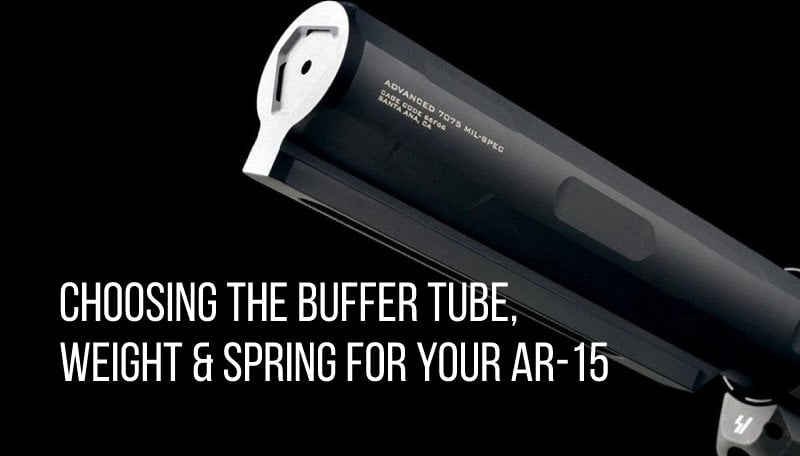
Optimizing a firearm’s performance starts with the right components, such as the buffer tube. This essential piece houses the recoil spring and buffer, which absorb gun recoil and aid in cycling. With multiple types on offer, selecting your ideal configuration requires careful consideration. To help sort things out, this guide reviews different AR-15 buffer tubes, weights, and recoil springs. Enjoy reading!
Table of Contents
Commercial vs. Mil-Spec AR-15 Buffer Tubes
When choosing an AR buffer tube, you’ll come across two main types: commercial and mil-spec. While they may look similar at first glance, there are some differences.
Mil-spec buffer tubes are designed according to strict General Accountability Office (GAO) standards to ensure interoperability, commonality, and reliability across different firearms manufacturers. These tubes have the same length of 7.25 inches and an outside diameter of 1.148 inches. The mil-spec tube threads are larger in diameter than the rest of the tube. They are made from higher-quality 7075 T6 aluminum alloys and rolled into the tube metal, which makes them stronger. The rest of the tube is milled down to the military-specified diameter.
Some firearm brands using mil-spec diameter buffer tubes include Armalite, Smith & Wesson, Colt, HK, Daniel Defense, and LWRC.
Read: Daniel Defense 5.56 NATO Rifles Review
If you’re interested in buying an aftermarket mil-spec tube, some brands worth checking out are Spike’s Tactical, Luth-AR, Aero Precision, and VLTOR.

Luth-AR Mil-Spec Dia Carbine Buffer Tube Complete Assembly
$50.69
Price accurate at time of writing
- For AR-15 Rifles
- Kit includes Mil-spec Carbine Tube" .223 buffer spring" .223 buffer body" latch plate and lock ring
- Mil Spec

SPIKE'S TACTICAL Mil-Spec 6 Position Carbine Buffer Tube Assembly
$86.38
Price accurate at time of writing
- 6-position MIL-SPEC buffer tube
- Latch plate
- Castle nut
- 17-7 stainless steel buffer spring
- Spike's Tactical ST-T2 Heavy Buffer
In contrast, the outside diameter of commercial-spec tubes is larger, 1.168 inches, and they feature a slanted back instead of the straight back found on mil-spec products. The threads are made from 6061 T6 billet aluminum and are cut in, not rolled in. It results in shorter and weaker threads but also lower manufacturing costs.
If you want a firearm using a commercial buffer tube, check out Rock River Arms, Bushmaster, and DPMS.

AERO PRECISION AR15 Carbine Buffer Kit
$58.90
Price accurate at time of writing
- Includes: Mil-Spec 7075-T6 Aluminum Buffer Tube, 6-position, Carbine buffer, Buffer spring, End plate and lock nut, Made in the USA. STOCK NOT INCLUDED
Ultimately, whether you choose a mil-spec or commercial buffer tube will depend on your individual needs and preferences as a shooter. But it’s noteworthy that AR-15 mil-spec buffer tubes are more common. So, if you value compatibility with other mil-spec components and require maximum durability from your equipment, then a mil-spec tube may be your better choice.
What Buffer Tube is Right for Adjustable and Fixed Stocks
The type of buffer tube you need will also depend on whether you plan to use a fixed or collapsible stock.
Fixed stocks generally require a rifle-length A2 buffer tube, which is longer than carbine-length buffer tubes. These buffer tubes provide the added length without compromising the function of the rifle’s recoil system.
Adjustable stocks, on the other hand, are commonly paired with carbine buffer tubes, which are shorter than rifle-length ones.
AR-15 Buffer Weights
As you’ve learned, the buffer tube houses the buffer and buffer spring. The buffer is a weight that sits inside the tube and aids in reducing felt recoil, absorbing some of the energy from each shot. The buffer spring provides tension against the buffer to ensure reliable cycling of the firearm’s action.
Without a properly functioning buffer and buffer spring system, reliability issues can arise that may impact accuracy or cause malfunctions during operation. Therefore, it’s important to select the right components when building or maintaining your AR-15 firearm.
Buffers come in several weights, each designed to provide optimal performance for specific calibers and configurations.
The most common buffer weights include:
- Carbine – 3 oz
- Heavy (H or H1) – 3.8 oz
- H2 – 4.6-4.7 oz
- Rifle – 5.0-5.2 oz
- H3 – 5.0-5.4 oz
- Pistol – 5.0-8.5 oz
Each of these weights provides varying levels of recoil reduction.
Carbine buffers are typically used with 5.56mm NATO/.223 Remington rounds and provide reliable operation in most standard AR-15 carbines with adjustable gas block/light bolt carrier.
Heavy (H or H1) buffers are often used with short-barreled rifles.
H2 buffers provide even greater recoil reduction than the H buffer, making it ideal for use with suppressed, violently-recoiling setups barrels shorter than 16 inches. However, compatibility will still depend on other parts, such as gas block and BCG.
Rifle buffers are typically used with longer-barreled rifles with fixed stocks.
H3 buffers are almost the heaviest carbine-sized option available, providing maximum recoil reduction for use with powerful rounds like .300 AAC, .50 Beowulf, or 7.62×39.
You may also come across Pistol buffers. These are compatible with PCC builds using pistol cartridges because they lack a gas system and have heavier BCGs.
Which Buffer Weight is Right for Your AR-15?
The table is a quick reference for buffer weights to use in your 5.56 AR-15.
| Barrel Length | Gas System | Suppressor | Buffer Weight |
| 18″ and longer | Mid-Length / Rifle Length | No | Standard or H1 |
| 14.5″ – 16″ | Carbine / Mid-Length | No | H1 or H2 |
| 14.5″ – 16″ | Carbine / Mid-Length | Yes | H2 |
| 10.5″ – 11.5″ | Carbine | No | H2 or H3 |
| 10.5″ – 11.5″ | Carbine | Yes | H3 |
| 10″ and shorter | Carbine / Pistol-Length | No | H2 or H3 |
Choosing the right buffer weight for your AR-15 rifle can also be influenced by the ejection pattern of your rifle. If your rifle is ejecting brass forward, you may want to consider using a heavier buffer. Conversely, if your rifle is ejecting more rearward, you may want to opt for a lighter buffer.
Buffer Springs and Specialty Systems
As for the types of AR-15 buffer springs, there are two of them – rifle and carbine. Rifle buffer springs are longer and are used in rifle tubes, while carbine buffer springs are shorter and are compatible with carbine tubes.
One common issue with standard buffer springs is that they can produce a loud “twang” sound during operation, which can be distracting. Fortunately, there are several brands and technologies available that aim to reduce this noise and improve overall performance.
The JP Enterprises Silent Captured Spring System replaces the traditional buffer spring and buffer with a self-contained unit fitted with a rubber buffer.
Geissele Automatics offers their Super 42 Braided Wire Buffer Spring as a premium option for shooters looking to upgrade their AR-15’s performance. The spring uses a braided construction of three independent wire strands. It works as a harmonic damper, helping to reduce noise levels.

GEISSELE Super 42 Braided Wire Buffer Spring and Buffer Combo
$64.57
Price accurate at time of writing
- Designed to improve the function and reliability of your AR-15 pattern rifle
- Unique spring design uses three independent strands of wire, just like the German MG42 Machine Gun
- This concept acts as a harmonic damper and energy absorber by allowing the springs to flex separately from each other
- This flex helps displace excess energy which decreases the chance of spring failure and assists with making your AR-15 more reliable
The Armaspec Stealth Recoil Spring is another innovative spring and buffer combo. It uses a dual-string design that eliminates sound associated with AR buffer tubes and prevents the buffer and bolt carrier from banging against the walls of the receiver extension.
Conclusion
Choosing the right buffer tube, buffer, and spring for your AR-15 rifle is essential for optimal performance and reliability. The type of AR buffer tube you choose will depend on your personal preferences and intended use. Whether you opt for a mil-spec or commercial buffer tube, ensure it’s compatible with your stock (collapsible or fixed) and overall gun configuration (rifle or carbine).
Similarly, selecting the appropriate AR buffer weight and spring is crucial for reliable cycling and reduced felt recoil and noise. Factors such as barrel length, gas system length, and whether or not you plan to use a suppressor all play a role in determining the right buffer weight for your specific setup.
FAQ
What is the difference between mil-spec and commercial buffer tubes?
Mil-spec buffer tubes have a slightly smaller diameter than commercial buffer tubes. Additionally, mil-spec tubes have a slightly different thread height.
Can I use a commercial buffer tube with a mil-spec stock?
No, because commercial tubes have a larger diameter. Mixing and matching can result in compatibility issues.
How do I determine the appropriate buffer weight for my rifle?
The appropriate buffer weight will depend on several factors, including barrel length, gas system length, and whether or not you plan to use a suppressor. Start with a standard buffer. Choose a heavier one for shorter configurations and suppressed guns.


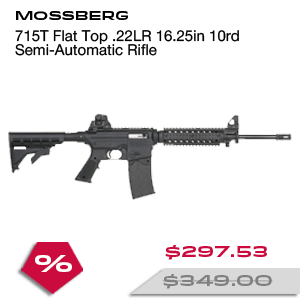
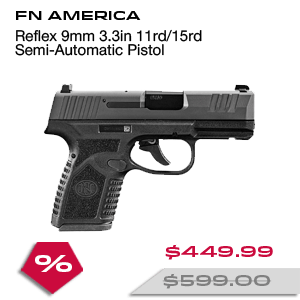
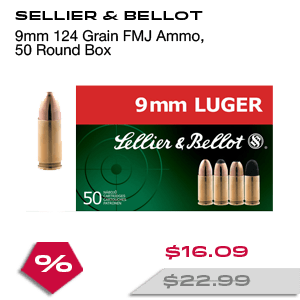

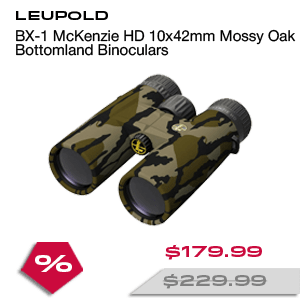





Leave a Reply